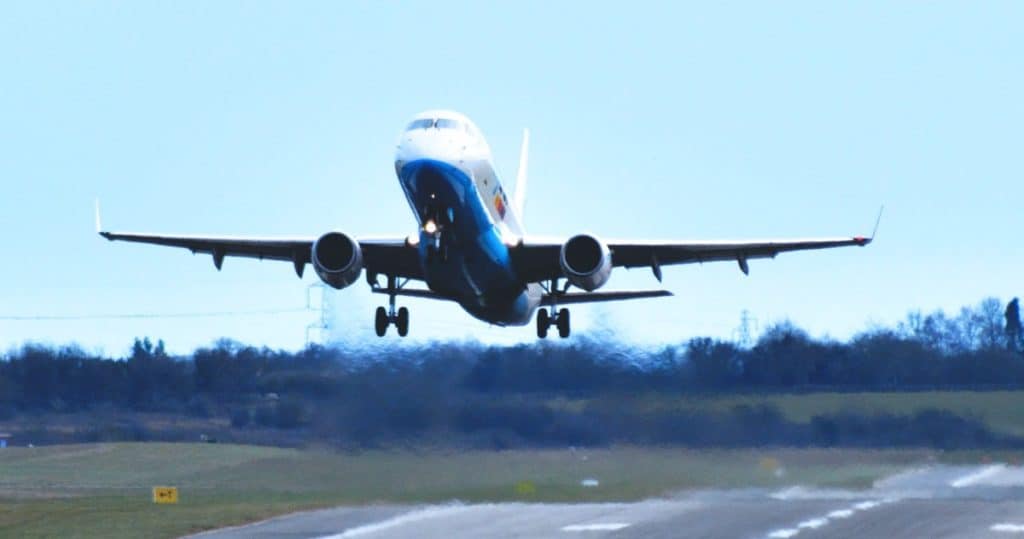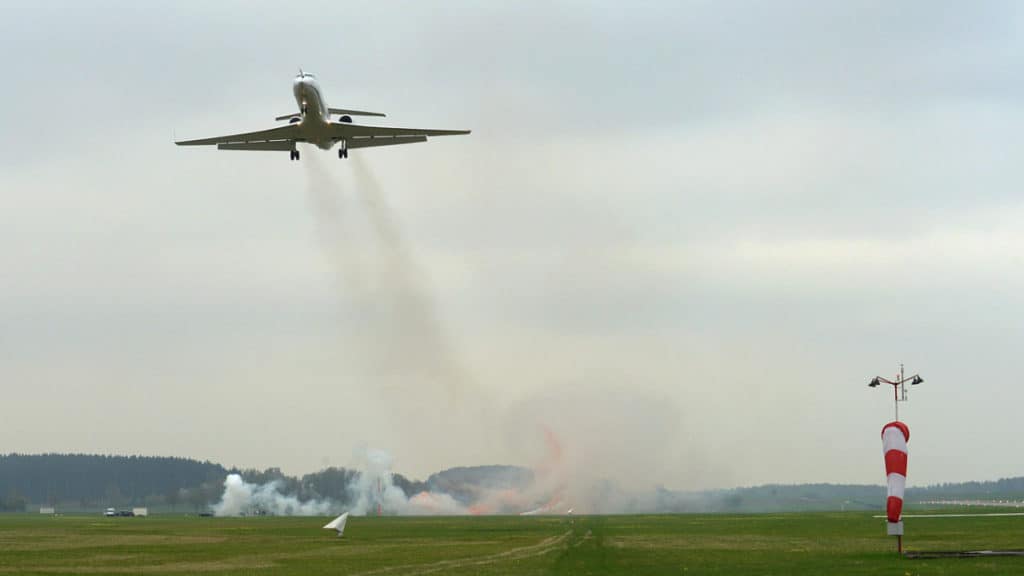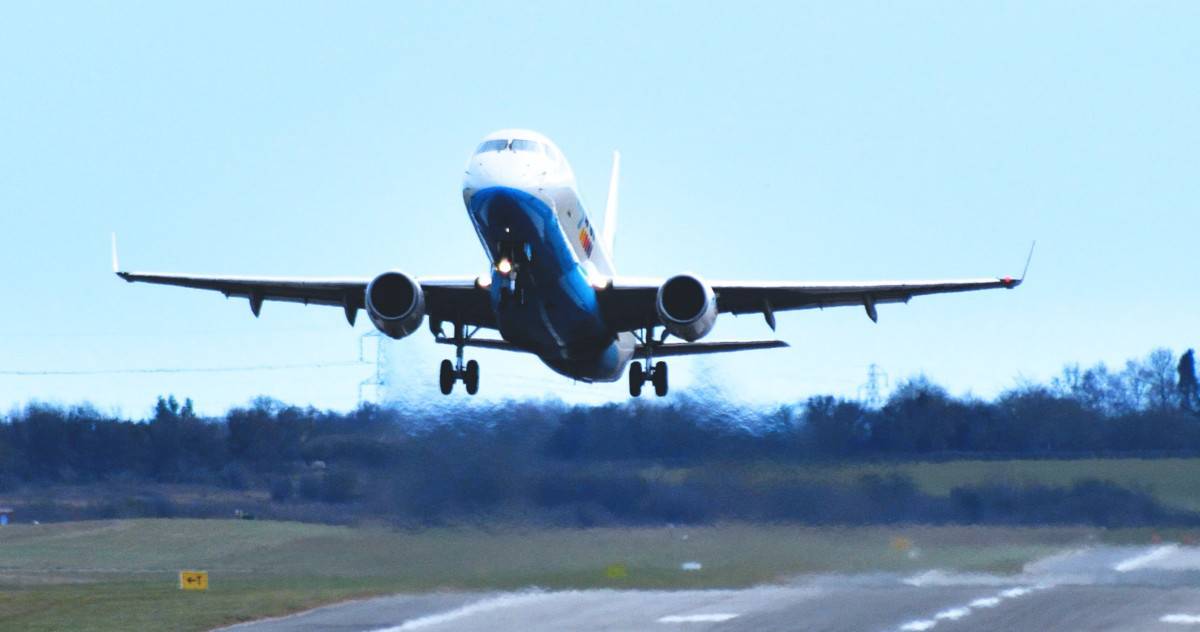
The other day I was sitting on an airplane and the person sitting next to me was very nervous. You could see their hands gripping the armrests tighter and tighter as we began to take off. During the flight, we got chatting and they told me they hated takeoffs because the bumps and vibrations terrified her.
Airplanes bump & shudder on takeoff mainly due to expansion joints in the runway surface, out-of-balance tires while being retracted for stowage, wake turbulence remaining from a previous aircraft, and crosswinds creating unequal lift across the airplane’s wings.
After explaining to her what the bumps and vibrations were she so was so much more relaxed! This article is a repeat of my explanation to her…
Airplane shudders and Vibrations on takeoff are caused by:
- Expansion Joints in Runway
- Crosswinds
- Wake Turbulence
- Out of Balance Tires
- Slowing of Wheels during stowage
Let’s take a look at each of these and see how they affect the comfort of your ride:
What are Runway Expansion Joints?
When runways are constructed their top layers are sectioned off into large slabs with gaps between them. These gaps allow the surface material to expand and contract with annual temperature changes and prevent cracking of the surface layer. The gaps are filled with a flexible sealant to prevent ice damage.
As the airplane takes off its tires roll over these expansion gaps and that creates a bump with each tire. These are usually the first bumps or vibrations you will feel as an airplane begins to take off.
The older the runway is, the more damage there is to its uppermost layer. The more gaps and cracks the runway has, the more bumps and vibrations you will feel. Runways are constructed from many layers of material with concrete or asphalt being the uppermost layer, depending on the runway design.
Runways need to be resurfaced regularly and major runways at the world’s biggest airports can be repaved every 6-10 years.

Join My Newsletter & Get Great Tips, Information and Experiences To Help You Become a Superb Pilot!
Why Do Crosswinds Make Airplanes Shake on Takeoff?
Strong crosswinds on a runway alter how lift is produced on an airplane wing. As the airplane lifts off the lift is created by the speed of airflow over it. When the speed of that airflow changes due to gusty and strong crosswinds, so does the lift.
If some wing sections create more lift than others this can cause the wings to violently flex and vibrations to be felt throughout the cabin. Wings are designed to do this though so no need to worry!
Strong crosswinds will also require large and abrupt flight control movements from the pilot/s to keep the airplane from being pushed off the centerline of the runway as the ground friction on the tires is reduced as the plane becomes airborne. This can cause shaking and rolling of the aircraft.
Learn More…
Try These Articles:
* Planes Landing Sideways – Why Not Just Land Straight?
* This Is Why Pilots Reduce Thrust After Takeoff
Why Does Wake Turbulence Make Airplanes Shake on Takeoff?
Wake turbulence is the disturbed air left behind an aircraft as it takes off. The larger and heavier the airplane, the more air its wings disturb as it lifts off. Aircraft departing after one another have to be held by air traffic control for this disturbed air to dissipate off the runway.
Just like a crosswind, pockets of irregular air sitting over a runway will affect how the wing that meets it produces lift. When the wind around an airport is calm this disturbed air (turbulence left in the wake of an aircraft) can linger over the runway.
As an airplane following meets this irregular air it can cause the airplane to lift off in unpredictable ways causing the pilots to react with abrupt and forceful control inputs to keep the aircraft where it needs to be.

It is for this reason that air traffic control may hold your airplane sitting on the runway for a few moments, especially of a larger airplane has taken off ahead of you and there is not much wind to help dissipate the uneven air pockets.
Why Do Tires Make Airplanes Shake?
Airplane tires can make an airplane shake when they are out of balance. This can be caused by ice build-up or irregular rubber wear each time the tires touch down. Wheels that are due for rebalancing can create large vibrations that can be felt by everyone onboard.
Every time a plane lands its tires are stationary until the moment of contact with the runway. In the brief moments of the initial contact the tire skids along the runways until it is brought up to the same speed as the landing aircraft.
Each skid creates a flat spot on the tires and these flat spots cause the rubber on each tire to wear unevenly. If more rubber is worn on one side of the tire compared to the other, this can create the tire and wheel to wobble as it rotates.
Remember back to an old washing machine that would ‘Walk’ itself across the room when they are running. This is because the clothes inside it all sat in one part of the drum causing it to be out of balance. The airplane tire is exactly the same.
The worse the airplane’s tires become the worse the vibrations that get transmitted into the cabin.
Learn More…
Try These Articles:
* Before Taking Off – What Do Pilots Check?
* Finding the Right Runway: How Do Pilots Know Where To Land?
The second reason that airplane tires make the aircraft shake on takeoff is during the storage of the landing gear.
As the airplane tires break contact with the runway’s surface the weight imposed on them by the airplane reduces causing the tire to change shape. This shape change also causes the tire to become out of balance and thus creates a different vibration just as the plane lifts off. The more tires the airplane has, the more vibration each tire sends into the cabin.
As the pilot raises the landing gear after takeoff they apply the brakes to prevent the tires from turning while in their wheel wells. This slowing down of the tires also causes them to vibrate at different frequencies until they are stopped.
The bumps and noises felt and heard at this time are the wheel well doors opening and closing as the landing gear stows for the cruise.
To Finish
The vibrations, shudders, and bumps heard and felt as an airplane takes off are all just normal operations and are nothing to be afraid of. Every aspect of these noises has been carefully researched and designed to ensure the aircraft can handle them with lots of room to spare.
Whether it is the runway, the weather, or another aircraft creating situations that make the airplane shudder it’s just a case of sitting back, relaxing, and letting the airplane do its thing.


